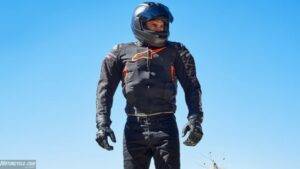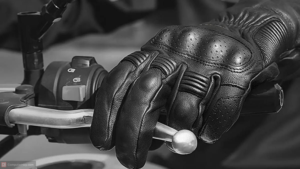Motorcycle gear, a quick guideline for newbies:
Becoming a motorcyclist can be a bit intimidating, motorcycles are a completely versatile vehicle as they can be used both to move around in the urban environment and to get away to a different city. In both cases, it’s vital to consider motorcycle equipment. Beyond protection, certain accessories enhance comfort and ease during the trip.
After the COVID-19 pandemic, predictions suggest a shift towards a more suitable motorcycle lifestyle, particularly for commuting and daily travel.
Commonly, adventure motorcyclists are seen as strange characters, always with all their protective equipment, and the truth is not very far away, but with big differences to what you think, if you are new to this world, all the information you may receive from friends, the internet and many other sources, may make you go a little crazy, confused and in the end it ends up stressing you, but hey, don’t worry, here’s a basic guide to solve this dilemma a little.
Below, you will find a list with the basic elements you need to start your motorcycle life as safe as possible. It should be noted that all these items are necessary for proper protection, both for the pilot and passenger, but we will number them according to its importance since over time you can acquire the others.So lets see a quick guideline for newbies for Motorcycle gear:
1.- Helmet
In short, the first essential item to be able to drive a motorcycle. Choosing the most suitable helmet is crucial as it’s responsible for protecting our head, ensuring safety while riding.
When choosing an adventure helmet, the big difference you will find is the price, usually the difference lies in its weight, aerodynamics and noise reduction properties, in addition to the materials and details. As for the weight, at first it does not seem to be a great determining factor since when trying them for a few moments we do not notice this difference, but if you plan to make long trips, both your back and neck will notice and appreciate it, not to mention that they are safer and they have a greater number of certifications that guarantee their resistance and duration.
When purchasing an adventure helmet, consider homologation, with three widely accepted standards: DOT, SNELL (common in the US), and ECE (predominant in Europe).
Having a different riding position than a sports or city motorcycle, it is important to have a visor that blocks the sun light that may interfere with our vision, in addition to providing better air conduction towards the ventilation channels located in the upper part of the helmet.
Full-face helmets offer greater security in impacts, while modular ones provide comfort for activities like taking photos. In hot climates we can open them and get more ventilation when driving at low speeds.
2.- Motorcycle protective suit
Its a must be in the Motorcycle gear. To protect our body is also a must. Once again, there are two main types, the mono piece and two-piece riding suit (jacket and pants)
Depending where mainly your riding will take place, even as a weekend street warrior or a long term adventurer, it could from a leather mono piece suit or a full adventure riding suit to ride in a motorcycle tour with you friends. A middle term is something more casual to commute in the city.

Other point to consider is the type of climate in which we are going to use them, hot, cold, rainy,
The key consideration is ensuring our suit is resistant to abrasions, impacts, and, if needed, waterproof for rainy conditions.
Our gear typically consists of two layers: an outer layer for abrasion and weather protection, and an inner thermal layer for warmth. These layers are often separable, so it’s advisable to review this detail for enhanced comfort and garment versatility.
If garments lack waterproofing due to cost, it’s wise to carry a packable waterproof suit for affordable and effective protection.
3.- Boots
Protecting our feet is also a main factor. Choosing boots is crucial due to the motorcycle’s weight and potential impact on ankles or legs if it falls.
Trekking boots aren’t advisable initially as they lack ankle support. Starting with them may lead to discomfort or instability.
Adventure boots offer a wide variety of options. Key specifications to check include ankle protection, calf height, comfort, and water resistance.
For optimal protection against falls, consider enduro-designed boots, though they may lack strong water resistance compared to other options. To help the problem of getting wet, you could use Gore-Tex socks if your boots are not fully waterproof.
4.- Gloves
Gloves are paramount when riding our motorcycles, for protection and comfort.

IWhen selecting gloves, consider comfort, abrasion resistance, knuckle protection, and water resistance/proofing for suitability and effectiveness.
Finding gloves with all desired characteristics is challenging. Start with a pair offering abrasion and water resistance, plus good ventilation. It’s advisable to have varied gloves for different situations. For instance, a pair for adventure, cold and rainy climates, and a lighter pair for hotter temperatures.
5.- Hydration
Often the idea of adventure motorcycle is related to long riding periods in all weathers. This is true and been hydrated is a must if we want to continue enjoying our trip. We recommend bringing a CamelBak with a 2-liter bladder and a half-liter Thermos with a hot beverage for emergencies. As convenient as it sounds, a CamelBak not only keeps you hydrated but also keeps your valuables easily accessible.
We hope this recommendation has helped you to clear any doubt. This is the basic gear we use in our motorcycle rental shop and it has worked out wonders for us.
| Visit Us | Motorcycle gear